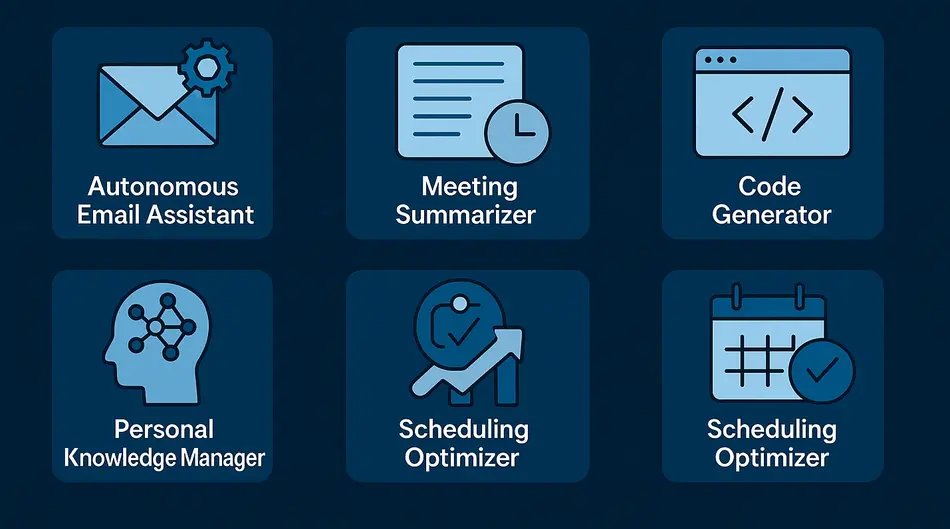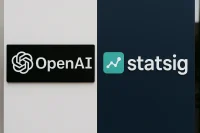Understanding the Autonomous AI Revolution
The autonomous AI tools market is undergoing a fundamental transformation. Unlike traditional automation that requires explicit programming for each scenario, today’s autonomous systems can independently navigate ambiguity, make contextual decisions, and learn from outcomes. This represents a significant leap forward from the rule-based automation of previous decades.
What makes modern autonomous AI tools particularly powerful is their ability to handle complex, multi-step processes without continuous human guidance. These systems can now understand objectives, develop execution strategies, and adapt to changing conditions—capabilities previously reserved for human workers.
According to research from Stanford University’s Institute for Human-Centered AI, organizations implementing autonomous AI tools are reporting productivity increases of 30-45% in knowledge work domains, with the most significant gains occurring in roles involving information processing, content creation, and decision support.
The Evolution From Assistive to Autonomous AI
The progression from assistive to autonomous AI tools represents a critical shift in human-machine collaboration. While assistive AI requires constant human direction, autonomous systems can independently:
- Interpret objectives and success criteria
- Develop execution strategies without explicit instructions
- Monitor their own performance and make adjustments
- Learn from outcomes to improve future performance
This evolution enables autonomous AI tools to handle increasingly complex tasks with minimal oversight. As noted by McKinsey’s Global Institute, organizations that effectively deploy autonomous systems are achieving productivity gains that significantly outpace those using traditional automation approaches.
Five Transformative Autonomous AI Tools
1. Autonomous Research Agents
Autonomous AI tools for research can now independently investigate complex topics, synthesize findings, and generate comprehensive reports. These systems go beyond simple information retrieval to deliver contextual insights tailored to specific business needs.
Key capabilities of these autonomous AI tools include:
- Independent exploration of multiple information sources
- Critical evaluation of source reliability and relevance
- Synthesis of conflicting information into coherent narratives
- Identification of knowledge gaps requiring human expertise
For example, Anthropic’s Claude has demonstrated the ability to autonomously research complex topics, evaluate multiple perspectives, and generate balanced analyses without continuous human guidance. This represents a significant advancement in autonomous AI tools for knowledge work.
2. Self-Directing Content Creation Systems
Content creation has been revolutionized by autonomous AI tools that can independently develop, refine, and optimize various media formats. These systems go beyond template-based generation to create truly original content aligned with brand guidelines and strategic objectives.
Modern content-focused autonomous AI tools can:
- Generate multiple content variations based on high-level objectives
- Autonomously refine outputs based on performance metrics
- Adapt tone and style to different audience segments
- Maintain brand consistency across diverse content formats
According to research published in the Harvard Business Review, marketing teams using autonomous AI tools for content creation are producing 3-4 times more assets while maintaining or improving quality metrics. This productivity gain allows human creators to focus on strategy and creative direction rather than execution.
3. Autonomous Project Management Systems
Project management has been transformed by autonomous AI tools that can independently monitor progress, identify bottlenecks, and recommend resource adjustments. These systems provide unprecedented visibility into complex projects while reducing administrative overhead.
Advanced project management autonomous AI tools can:
- Proactively identify potential delays before they impact timelines
- Autonomously reallocate resources based on changing priorities
- Generate status updates and stakeholder communications
- Learn from past projects to improve future planning accuracy
Organizations implementing these autonomous AI tools report significant reductions in project management overhead while improving on-time delivery rates. The systems excel at maintaining comprehensive visibility across complex initiatives without requiring constant human monitoring.
Explore Productivity Enhancement Opportunities
Related Post: Explore Top Jobs on WhatJobs
- Find positions requiring autonomous AI tools expertise
- Discover opportunities in emerging AI implementation fields
- Access job listings from companies embracing AI-human collaboration
- Connect with employers seeking professionals with AI integration skills
- Receive alerts for positions matching your specific AI expertise
4. Autonomous Data Analysis Platforms
Data analysis has been revolutionized by autonomous AI tools that can independently explore datasets, identify patterns, and generate actionable insights. These systems significantly reduce the time required to extract value from complex information sources.
Modern data-focused autonomous AI tools can:
- Independently clean and prepare data for analysis
- Explore multiple analytical approaches without explicit direction
- Generate visualizations tailored to specific insights
- Translate technical findings into business recommendations
According to analysis from Gartner Research, organizations implementing autonomous AI tools for data analysis are reducing time-to-insight by 60-70% compared to traditional approaches. This acceleration enables more agile decision-making and faster responses to market changes.
5. Autonomous Customer Interaction Systems
Customer service has been transformed by autonomous AI tools that can independently handle complex interactions across multiple channels. These systems go beyond simple chatbots to deliver personalized experiences that adapt to customer needs.
Advanced customer-focused autonomous AI tools can:
- Manage end-to-end customer journeys without human intervention
- Autonomously escalate complex issues to human agents
- Learn from successful interactions to improve future performance
- Maintain consistent brand voice across diverse scenarios
Organizations implementing these autonomous AI tools report handling 70-80% of routine customer interactions without human involvement while maintaining or improving satisfaction metrics. This efficiency allows human agents to focus on complex issues requiring emotional intelligence and creative problem-solving.
Strategic Implementation of Autonomous AI Tools
Identifying High-Value Opportunities
The most successful implementations of autonomous AI tools begin with careful identification of high-value opportunities. Rather than applying these technologies indiscriminately, organizations should focus on processes that meet specific criteria:
- High volume of repetitive but cognitively complex tasks
- Significant time investment from skilled professionals
- Clear success metrics for evaluating performance
- Sufficient data availability for system training
According to research from MIT’s Center for Information Systems Research, organizations that strategically target autonomous AI tools deployment achieve 3-4 times greater ROI compared to those pursuing broader implementation approaches. This focused strategy ensures resources are directed toward applications with the highest potential impact.
Maintaining Effective Human Oversight
While autonomous AI tools can operate independently, establishing appropriate human oversight remains critical. Effective governance frameworks typically include:
- Clear definition of system boundaries and decision authority
- Regular review of autonomous decisions and outcomes
- Mechanisms for human intervention when necessary
- Continuous evaluation of alignment with organizational values
Organizations implementing autonomous AI tools most successfully maintain what researchers call “meaningful human control”—oversight that preserves accountability without sacrificing efficiency gains. This balanced approach ensures autonomous systems remain aligned with organizational objectives while operating independently.
Hiring for AI Implementation Roles?
Post jobs for free with WhatJobs – Connect with top talent in AI integration, automation, and applied machine learning.
Post a Job Now →Measuring Impact and Optimizing Performance
Establishing Comprehensive Metrics
Evaluating the impact of autonomous AI tools requires metrics that capture both efficiency gains and quality outcomes. Effective measurement frameworks typically include:
- Productivity metrics (time saved, volume processed)
- Quality indicators (error rates, consistency measures)
- Business impact measures (cost reduction, revenue generation)
- User experience metrics (adoption rates, satisfaction scores)
Organizations implementing autonomous AI tools most successfully develop balanced scorecards that prevent optimization of one dimension at the expense of others. This comprehensive approach ensures autonomous systems deliver holistic value rather than narrowly defined efficiency gains.
Continuous Learning and Improvement
The most effective autonomous AI tools implementations incorporate mechanisms for continuous learning and improvement. These systems should:
- Systematically capture performance data and outcomes
- Identify patterns in successful and unsuccessful operations
- Incorporate human feedback into learning processes
- Regularly update models based on new information
According to research from Deloitte’s AI Institute, organizations that establish robust feedback loops for their autonomous AI tools achieve 40-50% greater performance improvements over time compared to those with static implementations. This continuous improvement approach ensures autonomous systems deliver increasing value as they mature.
The Future of Autonomous AI Tools
Emerging Capabilities and Trends
The autonomous AI tools landscape continues to evolve rapidly, with several emerging trends shaping future capabilities:
- Multi-agent systems that collaborate on complex tasks
- Increased transparency in autonomous decision processes
- Integration of symbolic reasoning with neural approaches
- Enhanced ability to explain actions and recommendations
These advancements will further expand the potential applications of autonomous AI tools across industries and functional domains. Organizations that establish strong foundations now will be better positioned to leverage these emerging capabilities as they mature.
Preparing for Increased Autonomy
As autonomous AI tools become more capable, organizations must prepare for increased levels of system independence. This preparation includes:
- Developing clear ethical guidelines for autonomous operation
- Establishing robust governance frameworks
- Training teams to effectively collaborate with autonomous systems
- Creating contingency plans for potential system failures
According to analysis from the World Economic Forum, organizations that proactively address these considerations achieve more successful implementations of autonomous AI tools while minimizing associated risks. This forward-looking approach ensures autonomous systems deliver sustainable value as their capabilities expand.
Conclusion: The Balanced Approach to Autonomous AI
The most successful implementations of autonomous AI tools maintain a balanced approach that leverages technological capabilities while preserving human judgment where it adds unique value. This integration creates a powerful partnership that delivers productivity gains exceeding what either humans or AI could achieve independently.
By strategically identifying high-value opportunities, establishing appropriate oversight mechanisms, and continuously improving system performance, organizations can harness the transformative potential of autonomous AI tools while managing associated risks. This balanced approach represents the most promising path forward in an increasingly autonomous technological landscape.
As autonomous AI tools continue evolving, the organizations that thrive will be those that view these systems not as replacements for human workers but as powerful partners that augment human capabilities. By focusing autonomous systems on tasks where they excel while preserving human judgment for complex decisions, organizations can create sustainable competitive advantages in an increasingly automated world.
FAQ About Autonomous AI Tools
How do autonomous AI tools differ from traditional automation?
Autonomous AI tools represent a significant advancement beyond traditional automation by demonstrating true self-direction rather than simply following predefined rules. While traditional automation requires explicit programming for each scenario and breaks down when encountering novel situations, autonomous AI tools can independently navigate ambiguity, make contextual decisions, and learn from outcomes without continuous human guidance. These autonomous AI tools can understand objectives, develop execution strategies, adapt to changing conditions, and improve their performance over time through experience. For example, while a traditional automated system might follow a rigid decision tree for customer interactions, autonomous AI tools can manage complex, multi-step customer journeys, recognize when situations fall outside their capabilities, and continuously refine their approach based on successful interactions—capabilities that were previously exclusive to human workers.
What types of tasks are best suited for autonomous AI tools?
The tasks best suited for autonomous AI tools typically involve high-volume, cognitively complex work with clear success metrics and sufficient training data. Ideal candidates include research and information synthesis, where autonomous AI tools can independently investigate topics across multiple sources and generate comprehensive reports; content creation, where these systems can develop, refine, and optimize various media formats aligned with strategic objectives; project management, where autonomous AI tools can monitor progress, identify bottlenecks, and recommend resource adjustments; data analysis, where these systems can explore datasets, identify patterns, and generate actionable insights; and customer interactions, where autonomous AI tools can handle complex service requests across multiple channels. The common thread among these applications is that they involve tasks requiring cognitive flexibility and contextual understanding but can be evaluated against objective performance criteria—allowing autonomous AI tools to deliver significant productivity gains while maintaining quality standards.
How should organizations balance autonomy with human oversight when implementing autonomous AI tools?
Organizations implementing autonomous AI tools should establish what researchers call “meaningful human control”—oversight that preserves accountability without sacrificing efficiency gains. This balanced approach includes clearly defining system boundaries and decision authority, determining which decisions autonomous AI tools can make independently versus which require human approval; implementing regular review processes for autonomous decisions and outcomes to ensure alignment with organizational objectives; creating mechanisms for human intervention when necessary, particularly for edge cases or high-stakes decisions; and continuously evaluating system performance against both efficiency metrics and alignment with organizational values. Successful implementations of autonomous AI tools typically follow a graduated approach, starting with closer oversight and gradually increasing autonomy as systems demonstrate reliability. This balanced governance framework ensures autonomous AI tools deliver productivity benefits while maintaining appropriate human judgment in critical decision processes.
What productivity gains can organizations expect from implementing autonomous AI tools?
Organizations implementing autonomous AI tools are reporting significant productivity gains across various functional domains. According to research from Stanford University’s Institute for Human-Centered AI, knowledge work productivity increases of 30-45% are common, with marketing teams using autonomous AI tools for content creation producing 3-4 times more assets while maintaining quality metrics. In data analysis, organizations are reducing time-to-insight by 60-70% compared to traditional approaches, enabling more agile decision-making. Customer service operations implementing autonomous AI tools typically handle 70-80% of routine interactions without human involvement while maintaining satisfaction metrics. However, these productivity gains from autonomous AI tools aren’t uniform across all implementations—organizations that strategically target high-value opportunities, establish appropriate governance frameworks, and create mechanisms for continuous improvement achieve substantially higher returns. The most successful implementations focus autonomous AI tools on tasks where they excel while preserving human judgment for complex decisions requiring creativity, ethical consideration, or stakeholder management.
How are autonomous AI tools likely to evolve in the near future?
Autonomous AI tools are evolving rapidly along several key dimensions that will expand their capabilities and applications. We’re seeing the emergence of multi-agent systems where multiple autonomous AI tools collaborate to handle complex tasks requiring diverse expertise, similar to human teams. Increased transparency in autonomous decision processes is addressing the “black box” problem, making these systems more explainable and trustworthy. Integration of symbolic reasoning with neural approaches is creating more robust autonomous AI tools that combine the pattern recognition strengths of deep learning with the logical reasoning capabilities of symbolic AI. Enhanced ability to explain actions and recommendations is making these systems more effective partners for human workers. Additionally, autonomous AI tools are developing improved capabilities for long-term planning and strategic thinking beyond tactical execution. Organizations that establish strong foundations now—including clear governance frameworks, ethical guidelines, and team training—will be better positioned to leverage these emerging autonomous AI tools capabilities as they mature.
The autonomous AI tools landscape is rapidly evolving beyond simple automation to deliver truly self-directing systems capable of completing complex tasks with minimal human oversight—creating unprecedented productivity gains for professionals who strategically integrate these technologies into their workflows while maintaining critical human judgment in decision-making processes.




